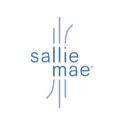How to become a Stylist
This article provides in-depth information into What is a Stylist? What Stylists do? Degrees for Stylists, Steps to become Stylist and much more.
A Fashion Stylist is one of the most popular emerging professions in the fashion world globally and is the job title of someone who selects the clothing and accessories for published editorial features, print or television advertising campaigns, music videos, concert performances, and any public appearances made by celebrities, models or other public figures. To become a stylist, you must have an extreme sense of fashion and me ready to move out of your comfort zone.
What does a Stylist do ?
Fashion stylists coordinate outfits from an array of clothing and accessories. They may dress mannequins for retail store displays or photo shoots and assist store customers with choosing clothing and accessories to complement their body type and lifestyle.
-
Select items to appear in fashion magazines/media.
-
Select clothing for TV personalities, celebrities or the wardrobe for film or TV characters.
-
Source fashion items and props for photographic shoots or film/tv personalities, or product placement in fashion magazines/media.
-
Advise on photographic approaches and the selection of locations, props, clothing, models, makeup artists, photographers, hair stylists and the overall look for photo shoots.
-
Advise and direct the photography of items and clothing selected for promotion.
-
Liaise with fashion designers, retailers, the media, models/model agencies, photographers, makeup artists, hairdressers, beauty therapists, personal trainers and the media.
-
Organise and compare fashion parades and events.
-
Write articles on the latest fashion trends.
-
Provide fashion direction to buyers, merchandisers and/or product developers/designers.
-
Speak at events about image and fashion trends.
-
Provide makeup and hair styling services to clients or complete makeup and hair styling on location for photo shoots.
Steps for becoming a Stylist
1
Earn An Associate's Degree
Many employers prefer a minimum of an associate's degree for fashion stylist positions. Several colleges offer two-year degree programs in fashion merchandising, which can provide you with the knowledge and skills necessary to be successful in the industry. Classes include the science of textiles, history of fashion, visual merchandising and retail buying. Programs may involve experiential learning, such as speaking with local fashion businesses and attending fashion meetings. You may be required to complete internships and/or assemble portfolios before graduation.
2
Build A Portfolio
Create a portfolio of work. Many employers require applicants to submit portfolios that display a variety of previous fashion styling work. If degree programs do not require you to create a portfolio, making one is still a good idea. Fashion projects completed as part of course requirements can contribute to this professional collection of work. Uploading the portfolio online may provide opportunities to connect with possible employers quicker.
3
Gain Experience
Fashion stylist positions often require at least four to five years of experience, though some require upwards of eight to ten years of work in the fashion industry. Entry-level fashion retail jobs can help you gain perspective on how various elements come together to create unique, ready-to-wear looks. Stylist jobs often require skills in multiple departments, so experience in areas like children's, men's, and intimates are good preparation. Entry-level jobs can also help you network and make contacts in the fashion industry.
4
Build Your Network
Join a fashion organization to stay current with industry trends. You need to ensure they are up-to-date on ever-changing fashion looks. Joining a professional organization, like the Association of Image Consultants International (AICI) or the International Fashion Stylists Association (IFSA), can connect you with resources, including the latest fashion news, professional development training opportunities and fashion industry events. The IFSA coordinates a major annual conference that includes lectures and workshops directed by fashion stylist leaders.
5
Earn Certification
Gaining certification demonstrates expertise and credibility in the fashion industry, which can expand career opportunities. The AICI offers certification at two levels: First Level Certification (FLC) and Certified Image Professional (CIP). Stylists must pass an exam covering technical aspects of apparel image and business topics, as well as provide a portfolio for review to earn the FLC credential. One year later, a stylist can earn the CIP by passing a more intensive portfolio review, in addition to demonstrating completion of continuing education and involvement in professional activities.
Stylist Degree Levels
Associate
While there are no fashion stylist associate degree programs you can complete a fashion design associate’s degree program. They are 60-70 semester credit hour programs and can be completed either online or on campus. The admission requirements are the same as the certificate programs and all you will need is a high school diploma or a GED.
Color theory
-
Color Application
-
Design
-
Presentation
Objectives
-
Demonstrate skills in designing with color
-
Visual awareness and critical observation of color
-
Introduces important concepts in color
Fashion history
-
Fashion and globalization
-
Fashion and the political
-
Fashion and gender
Objectives
-
Identify and evaluate cultural theories related to fashion history
-
Understand how clothing and fashion act as cultural indicators
-
Demonstrate critical thinking, research, and writing skills
Drawing techniques
-
Sketch the basic fashion figure
-
Illustrate the walking figure
-
Fall of garments on the body
Objectives
-
Express own personal style through fashion illustration
-
Sketch a fashion figure in different poses
-
Drawing of clothes on the figure
Bachelors
Bachelor’s degree programs in visual merchandising and fashion design teach students how to aesthetically communicate fashion trends to customers. Merchandising and fashion design programs teach students to produce visual images that make an impact in order to communicate and sell products such as jewelry and clothes to customers. Goals of merchandising professionals include enticing customers to enter a particular store, reinforcing branding, and selling fashions by encouraging mental associations between products and certain lifestyle choices.
Apparel design
-
Basics of Patternmaking and Sewing
-
Elements of Fashion and Design
-
Fabric Analysis
Objectives
-
Apply comprehensive abilities in creating and presenting product
-
Explore sustainability in design development
-
Create global design products utilizing knowledge of new technology
Marketing
-
Introduction to the Fashion Industry
-
The Use of Technology and Research in the Fashion Industry
-
Distribution markets
Objectives
-
Describe and define terminology and principles of textiles and apparel production
-
Appreciate and acknowledge business operations from design concept to consumer.
-
Master the art of inspirational and innovative techniques to implement in apparel merchandise
Merchandising theory
-
Overview of Visual Merchandising
-
Line & Composition
-
Light & Lighting
Objectives
-
Understand visual merchandising in various retail environments.
-
Apply strategies for making profitable display decisions for retailers.
-
Solve visual merchandising problems by integrating critical thinking and practice
Certificate
Certificate programs in fashion styling, merchandising and retail cover the basics of how to select and alter clothes for clients, as well as the evolution of fashion trends in history. Certificate programs can be taken separately or within the context of a degree program.
Alterations
-
Introduction of sewing machine
-
Information about the cloth
-
Material & Hand stitch
Objectives
-
Recognizing all parts
-
Common problems of machine
-
Understanding types of cloth
Clothing construction
-
Fabric Fundamentals
-
Basic Techniques
-
Body measurements
Objectives
-
Knowledge of the principles and elements of design
-
Identify various fibers, fabric constructions, finishes, garment styles, and construction techniques
-
Practice consumerism and basic care for clothing
Clothing selection
-
Color and Design
-
Textiles
-
construction of garments
Objectives
-
Understand the art elements and principles of designs
-
Know the basic natural fibers and man-made fibers
-
Be able to understand clothing construction terminology
| Minumum Credit Score | Apply in as little as | Variable APR | Fixed APR | ||
|---|---|---|---|---|---|
 | Not Available | 15 minutes or less | 2.95 | 4.74 | View disclosures |
 | 620 | 2 minutes | 5.38%-16.99%1 | 4.43%-16.99%1 | View disclosures |
 | Not Available | 15 minutes | 1.13% - 11.23%¹ (with autopay) | 3.50% - 12.60%¹ (with autopay) | View disclosures |